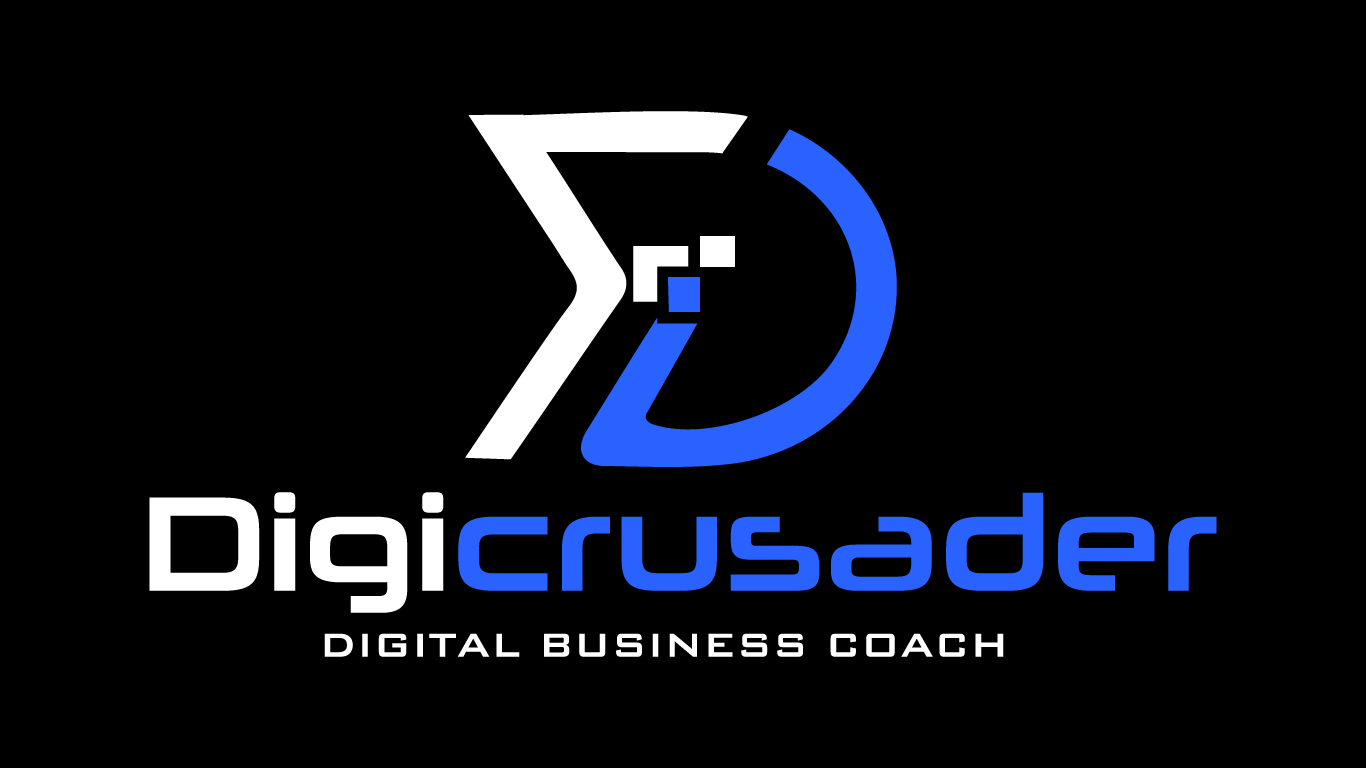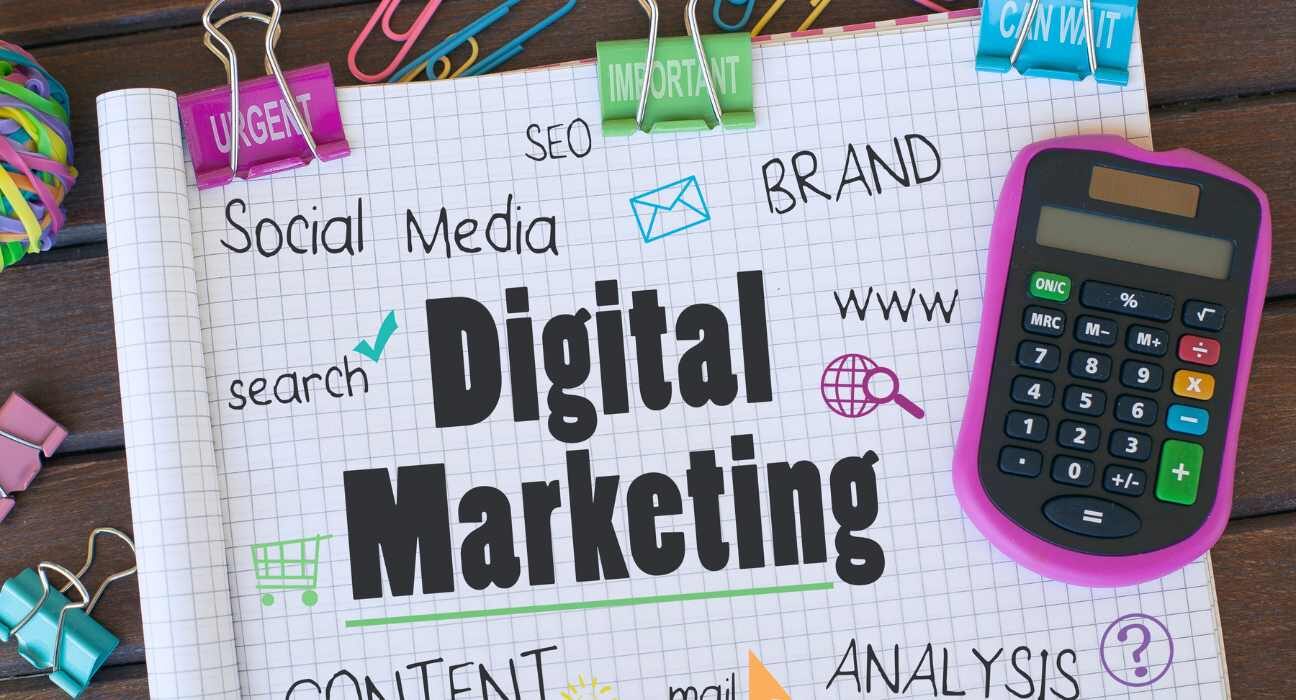In today’s fast-paced digital landscape, online businesses face constant competition to stand out and attract customers. To effectively market and grow their business, it’s crucial for companies to track and measure the performance of their efforts through some key digital marketing metrics. By doing so, they can gain insights into what works, what doesn’t, and make data-driven decisions to continuously improve and achieve success.
Importance of Digital marketing metrics as Key Performance Indicators (KPIs)
Have you ever wondered what the most important metrics are for measuring the success of your digital marketing campaigns? Do you know how to track and analyze website traffic, conversion rates, and lead generation? Have you considered the impact of customer acquisition costs on your bottom line?
These are all critical questions that online businesses must consider in order to optimize their marketing strategies and achieve their desired outcomes.
Consider these recent statistics which highlight the importance of digital marketing metrics for online business:
- According to a survey by *Hubspot, 59% of marketers say that increasing their return on investment (ROI) from digital marketing leadership coach is their top priority.
- A study by *AdEspresso found that businesses that track and analyze their digital marketing metrics have a conversion rate that is nearly three times higher compared to businesses that don’t.
In this article, we will dive deep into the key digital marketing metrics for online business and explore how these metrics can be used to drive growth and improvement. From website traffic and conversion rates, to lead generation and customer acquisition costs, we will uncover the most important metrics and provide real-world examples and data to help you understand how to track and analyze these metrics for your own online business.
So, whether you are a seasoned online business owner or just starting out, this article is a must-read for anyone looking to optimize their digital marketing efforts and achieve success in the digital age.
Why Digital Marketing Metrics Are Important for E-commerce Website?

The use of digital marketing metrics can be compared to driving a car. Just as you need to keep an eye on various gauges and indicators while driving, you need to track key metrics to measure the success of your online business.
Just as you check the speedometer to ensure you are driving at the right speed, you need to track website traffic to understand how many people are visiting your site. Similarly, just as the fuel gauge tells you how much fuel is left in the tank, you need to track the conversion rate to understand how many of your website visitors are actually becoming customers.
Just as you check the rear-view mirror to see what is happening behind you, you need to track your customer acquisition cost (CAC) to see how much it is costing you to acquire each customer. This can help you understand whether your marketing efforts are generating a positive return on investment (ROI).
In the same way that a GPS system helps you navigate to your destination, digital marketing metrics help you navigate the success of your online business. By tracking the right metrics and making data-driven decisions, you can stay on course and reach your business goals.
Now that we understand the importance of digital marketing metrics for on online business like an e-commerce website, let’s explore some key metrics in detail so you can start to measure and analyze them for your own business and turbocharge your online business growth.
Key Digital Marketing Metrics

For an online business, the funnel starts from getting traffic and the conversion of traffic results into sales, and hence I have bucketed the metrics broadly into Traffic, Conversion Funnel, Customer Engagement and Financial Metrics for an ease of understanding the end-to-end metrics in digital marketing.
Key Traffic Related metrics for an online business
1. Traffic
The number of visitors to a website, including unique visitors and page views. This metric is important to track as it provides a sense of the overall reach of the business.
2. Gross merchandise volume (GMV)
The total value of goods sold over a certain period of time, without taking into account returns or discounts. This metric is commonly used by e-commerce businesses to track the overall volume of sales.
Example: if an e-commerce business sold $500,000 worth of products in a single quarter, the GMV for that quarter would be $500,000.
3. Referral traffic
The percentage of visitors who come to a website from a referral source, such as a search engine, social media, or another website. This metric can help businesses understand the impact of different marketing channels and inform optimization efforts.
Example: if a website receives 100,000 visits in a single month and 20,000 of those visits come from a referral source, such as a search engine, the referral traffic would be 20%.
4. Unique visitors
The unique visitor metric in digital marketing is a measurement of the number of distinct individuals who visit a website within a specified time period. This metric helps businesses understand how many unique users are visiting their website and the frequency of their visits. A unique visitor is counted only once, even if they visit the website multiple times.
Example: if a website receives 100,000 visits in a single month and 60,000 of those visits are from unique individuals, the unique visitor count would be 60,000.
5. Mobile traffic
This measures the proportion of website traffic that comes from mobile devices. With an increasing number of customers using mobile devices to make purchases, it is important for online businesses to optimize the mobile experience and ensure high conversion rates for mobile visitors.
6. Traffic sources
Its important to understand the breakup of traffic sources for a website. For instance, if a website receives 100,000 visits in a single month and 40% of that traffic comes from organic search, 30% from direct traffic, and 30% from referral sources, the traffic sources would be 40% organic search, 30% direct, and 30% referral.
Key Customer Funnel Metrics for an Online Business
7. Conversion rate
The percentage of visitors who take a desired action, such as making a purchase or filling out a form. This metric is crucial to understanding the effectiveness of marketing and sales efforts.
Example: if a website receives 100,000 visits in a single month and 2,000 visitors complete a desired action, such as making a purchase or filling out a form, the conversion rate would be 2%.
8. Bounce rate
This metric measures the percentage of visitors who leave your website after only viewing one page. A high bounce rate indicates that your website content is not resonating with your audience.
A high bounce rate could also indicate that the website’s landing pages are not effectively capturing visitors’ attention and incentivizing them to explore more pages on the site. If the bounce rate is high, the business could consider revising their landing pages to make them more visually appealing and user-friendly.
Example: if a website receives 1000 visitors in a given time period and 400 of them leave after viewing only one page, the bounce rate would be calculated as follows: 400 / 1000 = 40%.
9. Shopping cart abandonment rate:
The percentage of visitors who add items to their cart but do not complete the checkout process. This metric is used to understand the reasons why visitors are not making purchases and can help inform improvements to the checkout process. Reducing the shopping cart abandonment rate can help to increase sales and improve the customer experience.
Example: if 1,000 visitors add items to their cart but only 800 complete the checkout process, the shopping cart abandonment rate would be 20% (200 divided by 1,000).
Key Customer Engagement Metrics
Metrics such as time on site, page views per session, and number of comments or shares can be used to measure the level of engagement that visitors have with a website.
10. Repeat customer rate
This measures the percentage of customers who make multiple purchases from the business. A high repeat customer rate can indicate strong customer loyalty and a successful customer experience.
Example: If a business had 100 customers in a month and 30 of them made repeat purchases, the repeat customer rate would be 30%. This would mean that 30% of the business’s customers are loyal and repeat customers.
11. Subscriber rate
The percentage of visitors who sign up for a newsletter or other subscription service. This metric is important for content-based businesses, such as blogs or news websites, to track the growth of their audience.
Example: if a website receives 100,000 visits in a single month and 10,000 visitors sign up for a newsletter, the subscriber rate would be 10%.
12. Average time on site
The average amount of time that visitors spend on a website. This metric can be used to understand the engagement of visitors and inform design and content decisions.
Example: if a website receives 100,000 visits in a single month and the average time on site is 3 minutes, the average time on site would be 3 minutes.
13. Pages per session
The average number of pages viewed by a visitor during a single session. This metric can be used to understand the engagement of visitors and inform design and content decisions.
Example: if a website receives 100,000 visits in a single month and the average number of pages viewed per session is 2, the pages per session would be 2.
14. Session duration
Session duration is a metric that measures the amount of time a user spends on a website during a single session. The average session duration is calculated by dividing the total time spent by users on the site by the total number of sessions.
This metric can provide valuable insights into user engagement and how well a website is retaining its visitors. If the session duration is high, it could indicate that users are finding the content engaging and are spending more time exploring the site. On the other hand, a low session duration could indicate that users are quickly leaving the site, indicating a lack of engagement or poor user experience. By tracking session duration, businesses can identify areas for improvement in their website design, content, and functionality to increase user engagement and retain visitors.
Example: If a website had 100 sessions in a day and users spent a total of 1000 minutes on the site, then the average session duration would be 10 minutes per session.
15. Engagement rate
This metric measures how engaged your audience is with your content and can be calculated by dividing the total number of interactions (such as likes, shares, comments) by your total number of followers.
Example: if a brand’s post on social media receives 100 likes, 20 shares, and 10 comments, the engagement rate would be calculated as follows: (100 + 20 + 10) / Total followers = 130 / Total followers = Engagement rate.
Key Financial Metrics for Digital Marketing in an Online Business
16. Average order value (AOV)
The average amount of money spent by a customer per order. This metric can be used to understand the effectiveness of pricing and upselling strategies.
A higher AOV may indicate that customers are purchasing more expensive products, or that they are adding more items to their carts. On the other hand, a lower AOV may indicate that customers are purchasing less expensive products, or that they are not adding as many items to their carts. By understanding the AOV, a business can make informed decisions about pricing, promotions, and product offerings to maximize revenue.
Example: Let’s say that a online business had total revenue of $100,000 from 1000 orders in a month. The AOV for that business would be $100 ($100,000/1000). This information can be used to identify trends in customer spending habits and inform business decisions related to pricing and product offerings.
17. Customer lifetime value (CLV)
Customer Lifetime Value (CLV) is a metric that estimates the total value a customer will bring to a business over the course of their relationship. This is calculated by multiplying the average purchase value by the average number of purchases per year and the average customer lifespan.
It’s important to note that CLV is an estimate and can vary greatly depending on a variety of factors, including customer behavior and market conditions. However, tracking and understanding CLV can help businesses make informed decisions about marketing and customer retention strategies.
Example: let’s say a customer has an average purchase value of $50, makes purchases 4 times a year, and has a customer lifespan of 3 years. The CLV for that customer would be:
$50 * 4 * 3 = $600
So, this customer is expected to bring in $600 in revenue over the course of their relationship with the business.
18. Cost per acquisition (CPA):
This metric measures the cost of acquiring a new customer through your digital marketing efforts. It is calculated by dividing the total cost of a marketing campaign by the number of new customers acquired.
This metric can be used to measure the effectiveness of marketing campaigns and determine which channels are driving the most valuable customers.
Example: if a company spends $10,000 on a marketing campaign and acquires 100 new customers, the CPA would be calculated as follows: $10,000 / 100 = $100.
19. Return on investment (ROI)
ROI, or Return on Investment, is a key metric for evaluating the performance of an online business. It measures the amount of profit generated by a business compared to the amount invested.
This metric can be used to assess the effectiveness of various marketing channels, such as email marketing, social media advertising, and search engine optimization. It can also be used to evaluate the success of specific campaigns and make informed decisions about where to allocate resources in the future.
Example: If an online business invested $100,000 in marketing and generated $200,000 in profit, the ROI would be 100% ($200,000-$100,000)/$100,000 = 1.0, meaning the business earned back its investment and then some.
20. Return on advertising spend (ROAS):
Return on Advertising Spend (ROAS) is a key metric used to measure the effectiveness of an advertising campaign and the return on investment generated from it.
Example, let’s say an online retailer spends $100,000 on Google AdWords to promote their products. Over the course of the campaign, they generate $200,000 in revenue from the ads. In this case, the ROAS would be 200,000/100,000 = 2. This means that for every dollar spent on advertising, the retailer has generated 2 dollars in revenue. This indicates that the advertising campaign has been successful in generating a positive return on investment, and the retailer can continue to invest in it. However, if the ROAS is less than 1, it means that the retailer is losing money on the advertising campaign, and they may need to consider adjusting their strategy.
ROAS vs ROI : How are these performance metrics different?
ROAS (Return on Advertising Spend) and ROI (Return on Investment) are both performance metrics used to measure the efficiency and profitability of an investment, but they have different scopes and calculation methods.
ROI is a measure of the overall profitability of an investment, and it can be calculated by dividing the net profit by the total cost of the investment. For example, if an online business invests $100,000 in advertising and generates $200,000 in revenue, its ROI would be 100% ($100,000 net profit / $100,000 investment).
ROAS, on the other hand, is a measure of the return generated specifically from advertising spend. It’s calculated by dividing the revenue generated from advertising by the cost of advertising. For the same example as above, if the online business spent $100,000 on advertising and generated $200,000 in revenue from that advertising, its ROAS would be 200% ($200,000 revenue / $100,000 advertising spend).
ROAS is a more focused metric that helps businesses determine the effectiveness of their advertising efforts and make informed decisions about their advertising budgets. On the other hand, ROI provides a more comprehensive view of the overall profitability of an investment, including both the cost and revenue generated from advertising as well as other factors.
There are also other financial metrics on an online business which are akin to a traditional P&L like Gross margins which measures the profit margins of a business’s products or services after deducting the cost of goods sold. A high gross margin can indicate a profitable business model and the ability to grow and scale.
I will soon post another article covering the P&L metrics business owners should measure and analyze to profitably scale the business.
Do subscribe to this digital marketing blog to stay updated with all the unique and insightful content which will help you turbocharge your business.
Key Digital Marketing Metrics for E-Commerce, Lead Generation, Content Business and Social Platform
For an e-commerce business, key metrics may include GMV, conversion rate, AOV, CLV, and shopping cart abandonment rate.
For a content-based business, key metrics may include referral traffic, subscriber rate, average time on site, and pages per session.
For a lead generation business, key metrics may include conversion rate, CPA, and cost per lead (CPL).
For a social media platform, key metrics may include monthly active users (MAU), daily active users (DAU), and engagement metrics such as likes, comments, and shares.
These are just a few examples of the different types of metrics that can be tracked by different types of online businesses. The specific metrics used will depend on the goals of the business and the type of data that is available.
Case Study on Digital Marketing Metrics: An Online Clothing Retailer

An online clothing retailer was facing low conversion rates and high bounce rates on their website. After analyzing their website traffic data, they discovered that their product pages were not optimized for user experience. The pages were cluttered with too much information, images were slow to load, and the checkout process was confusing.
To address these issues, the retailer made a number of changes to their website. They streamlined the product pages to focus on the most important information and made images load faster. They also simplified the checkout process and made it easier for customers to complete their purchase.
The results were immediate. Bounce rates dropped significantly and conversion rates increased by 20%. Additionally, the average order value increased by 10%, and the retailer saw a 25% increase in repeat customers.
This case study shows how monitoring and analyzing key online business metrics can help a business identify opportunities for improvement and drive growth. By tracking and understanding metrics like bounce rate, conversion rate, and session duration, the retailer was able to make data-driven decisions that had a positive impact on their business.
Digital Marketing Metrics data for Large Online Businesses Like Amazon

Key Amazon Performance Metrics
According to similarweb.com, Amazon’s global bounce rate is around 28%. This indicates that around 72% of visitors who land on Amazon’s website go on to visit multiple pages, while the conversion rate is estimated to be around 14%. This means that 14 out of 100 visitors to the site end up making a purchase.
Amazon’s average session duration is around 10 minutes, according to similarweb.com. This indicates that on average, visitors spend 10 minutes on the site during a single session, while Amazon’s AOV (Average order value) is estimated to be around $100.
Amazon’s CAC (Customer acquisition cost) is estimated to be around $30, based on advertising and marketing costs. This means that for every new customer Amazon acquires, they spend around $30, and Amazon’s LTV (Customer Lifetime value) is estimated to be around $1,000 per customer. This means that the estimated revenue that Amazon generates from a single customer over the course of their lifetime is around $1,000.
Key Walmart Metrics
Bounce rate: Around 40% Conversion rate: Around 3% Session duration: Around 6 minutes Average order value (AOV): Around $60 Customer acquisition cost (CAC): Around $20 Lifetime value (LTV): Around $500 per customer
Key Etsy Metrics
Bounce rate: Around 45% Conversion rate: Around 4% Session duration: Around 7 minutes Average order value (AOV): Around $30 Customer acquisition cost (CAC): Around $15 Lifetime value (LTV): Around $250 per customer
Key Target Metrics
Bounce rate: Around 35% Conversion rate: Around 4% Session duration: Around 8 minutes Average order value (AOV): Around $80 Customer acquisition cost (CAC): Around $25 Lifetime value (LTV): Around $600 per customer
Key Alibaba Metrics
Bounce rate: Around 30% Conversion rate: Around 5% Session duration: Around 8 minutes Average order value (AOV): Around $70 Customer acquisition cost (CAC): Around $20 Lifetime value (LTV): Around $500 per customer
Please note that these numbers are rough estimates from multiple sources and should not be considered exact or official. The actual metrics for these companies could be different and are not publicly disclosed. Additionally, these metrics can vary greatly between businesses and industries, and can also change over time as a business grows and evolves.
Tracking Business metrics is crucial for new online businesses

If you’re a new online business, tracking key metrics can help you understand the performance of your business, identify areas for improvement, and make data-driven decisions to drive growth.
Here’s how to start tracking these metrics:
Choose the right tools
There are a number of tools available to track online business metrics, such as Google Analytics, Mixpanel, and KISSmetrics. Choose a tool that best suits your needs and budget and set it up to track the key metrics you want to monitor.
Define your goals
Before you start tracking metrics, define what you want to achieve with your online business. This will help you determine which metrics are most important to track and how you will measure success.
Set up tracking
Once you have chosen your tools and defined your goals, set up tracking for the key metrics you want to monitor. This may involve installing tracking code on your website or configuring your analytics tool to track specific events.
Monitor regularly
Regularly monitor the metrics you are tracking and use the data to make informed decisions about your business. Consider setting up automated reports to help you stay on top of your metrics.
Continuously optimize
Use the data from your metrics to continuously optimize your online business. Identify areas for improvement, test changes, and monitor the impact on your metrics to drive growth and success.
By tracking these metrics, you can gain valuable insights into the performance of your online business and make data-driven decisions to drive growth and success.
Not all online businesses are successful in the long run: Healthy Business metrics are key to sustaining growth
Let’s see a few examples of online businesses which were huge at some point, but eventually saw a decline due to changing landscape, emerging competition, and evolving consumer behavior, all of which could have been proactively addressed by measuring and keeping pulse of the key business metrics we discussed earlier.
MySpace
MySpace was one of the first social networking sites and at one time was the most popular website in the world. However, it failed to keep pace with the rapid growth of Facebook and eventually lost its user base. The failure of MySpace can be attributed to a lack of innovation and poor user experience, which resulted in declining engagement and low user retention rates.
Friendster
Friendster was one of the first social networking sites and was very popular in the early 2000s. However, the site struggled with scalability issues and poor user experience, which led to declining engagement and low user retention rates. Friendster eventually faded into obscurity, as other social networking sites such as Facebook and MySpace rose to prominence.
Quirky
Quirky was an online platform that aimed to make it easy for people to bring their product ideas to market. Despite receiving significant investment and media attention, the company struggled with high operating costs, slow product development cycles, and low sales. In 2015, Quirky filed for bankruptcy, highlighting the importance of sustainable revenue growth and cost management for online businesses.
Groupon
Groupon was one of the first companies to popularize the daily deal model. However, the company struggled with high customer acquisition costs, low customer lifetime value, and low profit margins, which resulted in declining revenues and profitability. Groupon eventually pivoted its business model, but the early struggles of the company highlight the importance of customer acquisition costs and customer lifetime value for online businesses.
Fab.com
Fab.com was an online retailer that specialized in selling design-focused home goods and fashion products. Despite rapid growth and significant investment, the company struggled with high operating costs, low profit margins, and declining customer engagement, which resulted in declining revenues and profitability. Fab.com eventually pivoted its business model and was acquired by PCH, highlighting the importance of sustainable revenue growth and cost management for online businesses.
Toys “R” Us
Toys “R” Us was once one of the largest toy retailers in the world. However, the company struggled to keep pace with the rapid growth of online competitors, such as Amazon, and was unable to compete on price, selection, and customer experience. Despite a significant presence in the physical retail space, Toys “R” Us was unable to effectively compete in the digital space, which ultimately led to its bankruptcy and liquidation.
These examples highlight the importance of tracking and analyzing key metrics, such as customer acquisition costs, customer lifetime value, profit margins, and user engagement, to ensure the long-term success of your online business. By monitoring these metrics and making data-driven decisions, you can ensure that your online business remains competitive and sustainable over time.
Examples of Gold Standard in digital marketing metrics from successful online businesses
Here are a few examples of companies that have been successful in cracking each of these metrics:
Customer Acquisition Cost: Many online businesses have seen success with a low customer acquisition cost, including companies like Amazon, Airbnb, and Dropbox. For example, Amazon has consistently kept its customer acquisition cost low, which has allowed the company to reinvest its profits into expanding its product offerings and improving the customer experience.
Customer Lifetime Value: Companies that have a high customer lifetime value, such as Netflix, Spotify, and Dollar Shave Club, have been successful in retaining customers and generating recurring revenue. For example, Netflix has a high customer lifetime value, which is supported by its monthly subscription model and its ability to consistently produce high-quality, original content that keeps subscribers engaged and coming back for more.
Profit Margins: Companies that have a high profit margin, such as Apple, Microsoft, and Facebook, have been successful in generating significant profits, despite their high operating costs. For example, Apple has consistently had high profit margins, which is due in part to its premium pricing strategy and its ability to maintain high margins on its hardware products.
User Engagement: Companies that have high user engagement, such as Facebook, Instagram, and TikTok, have been successful in keeping users engaged and spending time on their platforms. For example, Facebook has consistently had high user engagement, which is driven by its ability to deliver relevant and personalized content to users, as well as its ability to keep users connected with friends and family through its social networking features.
It is worth noting that these companies have been successful in these metrics due to a combination of factors, including effective marketing strategies, innovative product offerings, and a focus on the customer experience. To achieve success in these metrics, online businesses need to consistently monitor and analyze their performance and make data-driven decisions to continuously improve their results.
How to Track Digital Marketing Metrics
To start tracking digital marketing metrics, businesses should first determine which metrics are most relevant to their goals and objectives. They can then use digital analytics tools, such as Google Analytics, to monitor these metrics and gain valuable insights. It’s important to regularly review and analyze these metrics, as they can provide valuable information that can help guide decision-making and drive business growth.
Conclusion: Tracking Digital Marketing Metrics is key to long term growth of an online business
In conclusion, tracking the right digital marketing metrics is crucial for the success of any online business. These metrics provide a valuable window into the effectiveness of a business’s marketing efforts and can be used to make informed decisions that drive growth.
From website traffic and conversion rates, to lead generation and customer acquisition costs, each metric provides a unique perspective on how a business is performing and what needs to be improved. By focusing on the metrics that matter and utilizing the data they provide, businesses can optimize their digital marketing strategies and achieve their desired outcomes.
In today’s digital landscape, staying ahead of the competition requires a data-driven approach, and by understanding the key metrics discussed in this article, businesses can do just that.
Hope you found this read insightful. I recommend you to check out this article on how online businesses can leverage these cognitive biases in digital marketing to drive high traffic and conversion, and turbocharge their growth flywheel.












3 Comments